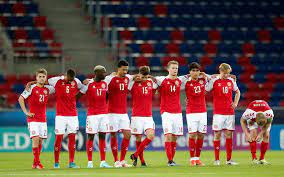
Hearts FC
Hearts FC, also known officially as Heart of Midlothian Football Club, is one of Scotland’s most storied and beloved football institutions. Established in Edinburgh in 1874, this historic club has a rich heritage, passionate supporters, and a legacy that spans over a century. Hearts FC represents more than just a football team; it is a symbol of cultural pride, resilience, and tradition intertwined with the history of Scottish football.
This comprehensive article explores the soul of Hearts FC, delving into its origins, iconic moments, legendary players, passionate fanbase, and pivotal role in Scottish football history. Through detailed analysis, personal insights, and thorough research, we aim to provide an engaging and in-depth understanding of this remarkable club.
Origins and Early History of Hearts FC
Understanding the roots of Hearts FC is essential to appreciating its significance within Scottish football. From its humble beginnings in 19th-century Edinburgh to becoming a mainstay in national competitions, the club’s early history is filled with inspiration and perseverance soco live.
The founding of Hearts FC reflects the social and cultural fabric of Victorian Edinburgh. Initially formed by a group of young men from the working-class districts of the city, they aimed to create a local club that could compete with established teams from the surrounding areas. This grassroots origin laid the groundwork for a club that would grow into a symbol of community identity.
In its formative years, Hearts FC quickly gained recognition for its competitive spirit and sporting prowess. Early victories in regional competitions established the club as a formidable force, setting the stage for future successes. The adoption of maroon as the club color, inspired by the Spanish Royal Family, further cemented their identity and unique character.
As Scottish football evolved, so did Hearts FC, transitioning from local competitions to national prominence. The 1880s marked a period of stability and growth, culminating in the club’s first Scottish Cup victory in 1891 — a landmark achievement that elevated its status across the nation. The club’s early efforts reflected its community-oriented focus and resilience, qualities that continue to define its ethos today.
The club’s geographical location in Edinburgh placed it in direct rivalry with other iconic clubs, such as Hibernian and Hearts. These rivalries fueled fervent support and intensified competitive spirits, shaping the club’s identity as a passionate and proud team representing the hearts of its supporters.
In the years that followed, Hearts FC distinguished itself through innovative tactics, strong leadership, and dedicated players. Its early history is punctuated with moments of triumph and adversity, all of which contributed to forging a resilient and ambitious club that would endure for generations.
Key Moments and Triumphs in Hearts FC’s History
Throughout its existence, Hearts FC has experienced a series of noteworthy successes and challenges that have defined its legacy. From domestic triumphs to memorable European campaigns, these moments highlight the club’s significance within Scottish and international football.
One of the most celebrated periods in Hearts FC history was during the early 20th century, when the club secured multiple Scottish League titles and Scottish Cups. The 1950s, in particular, marked a golden era, with legendary players like Jimmy Wardhaugh and Alfie Conn leading the team to domestic dominance.
An iconic highlight was the winning of the Scottish League Championship in the 1957-58 season, considered one of the club’s finest achievements. This victory was characterized by tactical discipline, attacking flair, and a cohesive team spirit. It elevated the club to national prominence, inspiring generations of supporters and players alike.
Hearts FC’s participation in European competitions also stands out as a significant chapter. In the 1960s and 1970s, the club challenged European giants, with notable matches against Inter Milan and Bayern Munich. Although not clinching major European trophies, these campaigns showcased Hearts’ resilience and competitive spirit on the continental stage.
The club also faced periods of hardship, notably financial difficulties and relegations in the late 20th and early 21st centuries. These moments tested the resilience of the supporters and the management but ultimately strengthened the community’s bond with the club.
The most recent successes include qualifying for European tournaments and domestic cup runs, reflecting the ongoing vitality of Hearts FC. These accomplishments underscore the club’s capacity to reinvent itself and remain relevant in modern Scottish football.
Heavy emphasis should be placed on the emotional connections fans retain with these moments, as they symbolize perseverance and hope. The club’s resilience in facing adversity exemplifies its enduring spirit — one rooted deeply in the history of Hearts FC.
Legendary Players and Managers
The history of Hearts FC is intertwined with numerous legendary figures whose talents and leadership have left indelible marks on the club. These individuals have not only achieved personal greatness but have also helped shape the club’s identity and future.
Jimmy Wardhaugh, often hailed as one of the finest players in Hearts’ history, was renowned for his goal-scoring prowess and leadership qualities. His tenure at the club during the 1950s propelled the team to domestic dominance and earned him legendary status among supporters. Wardhaugh’s versatility and work ethic exemplified the ideal player archetype, inspiring younger generations.
Another influential figure is Craig Levein, a former player and manager whose strategic insight and passion for the club helped guide Hearts through turbulent times. As a manager, Levein emphasized disciplined defending and cohesive team play, leading to notable successes such as cup runs and league stability. His tenure also reflects how leadership off the pitch is as crucial as on-field talent.
The club’s goalkeeping icon, Jim Cruickshank received national recognition for his agility and shot-stopping ability. His performances in the 1960s helped anchor the team’s defense and earn him accolades, contributing to some of the club’s most memorable achievements.
In recent years, players like Steven Naismith have captured the imagination of supporters. Naismith’s versatility, leadership qualities, and influence during his time at the club further exemplify the ongoing tradition of nurturing top talent at Hearts FC.
The managerial history of Hearts is equally rich. Hearts has been led by legendary figures such as John McGorry, who emphasized youth development and tactical innovation, and more recent managers like Daniel Stendel, whose energetic style aimed to reestablish Hearts as a competitive force domestically and in Europe.
These individuals symbolize the skill, dedication, and passion that define Hearts FC. Their stories demonstrate how one person’s influence can shape the club’s trajectory and legacy.
Supporters and Cultural Significance
The heartbeat of Hearts FC lies within its passionate and dedicated supporters. The club boasts a vibrant fanbase that spans generations, uniting people through their shared love and loyalty.
The fan culture of Hearts FC is rooted in Edinburgh’s rich working-class traditions, where football has historically served as an outlet for community expression and social cohesion. The fans’ unwavering support, even during periods of adversity, speaks volumes about the deep emotional bond with the club.
Stadiums like Tynecastle Park are not merely venues for matches but sanctuaries where histories are made and identities reinforced. The atmosphere on match days is electric, with fans singing, chanting, and painting their passion vividly across stands and terraces. The collective energy fosters a sense of belonging that transcends football, weaving the club into the city’s cultural fabric.
The rivalry with Hibernian, known as the Edinburgh Derby, symbolizes more than local competition; it embodies historical, social, and cultural distinctions. The intensity of this rivalry showcases the fervor of Hearts supporters and adds a layer of cultural significance to their identity.
Fan-driven initiatives, such as the Heart of Midlothian Supporters Club, play an active role in community outreach, charitable activities, and ensuring that the club remains connected to its roots. Their engagement sustains the club through challenges and celebrates its victories.
Moreover, the club’s identity extends beyond Scotland, attracting international supporters who resonate with its history and ethos. Online communities, fan forums, and social media platforms enable a global following, further amplifying the club’s cultural influence.
The supporters of Hearts FC are more than spectators; they are the custodians of a proud tradition, ensuring that the spirit and legacy of the club endure through generations.
The Future of Hearts FC
Looking ahead, the future of Hearts FC hinges on strategic planning, youth development, financial stability, and maintaining strong community ties. With Scottish football evolving amid globalization and commercial pressures, the club must navigate these challenges thoughtfully.
Investing in youth academies and talent cultivation is essential to ensure sustained success. Developing homegrown players not only strengthens team cohesion but also solidifies the club’s identity rooted in local pride. Nurturing talent from Edinburgh and beyond will create a pipeline of future stars and foster continuity.
Financial stability remains paramount. The club’s history is marked by periods of hardship, but forward-thinking ownership and sound management can secure a sustainable future. Creating revenue streams through merchandise, international outreach, and digital engagement will diversify income and lessen vulnerabilities.
On-field success will continue to rely on tactical innovation and strong leadership. Embracing modern analytics, conditioning, and strategic game plans will help Hearts FC stay competitive. Coupled with passionate management, this approach will inspire players and supporters alike.
The club also aims to deepen community involvement. Initiatives that promote social cohesion, education, and inclusivity will uphold the club’s role as a pillar of Edinburgh’s social fabric. Community engagement enriches the club’s cultural significance and sustains its loyal support base.
Furthermore, embracing digital transformation, such as enhanced online content and virtual experiences, will connect with a broader global audience. Building a digital community not only boosts visibility but also lays the groundwork for international support and commercial opportunities.
In conclusion, Hearts FC’s trajectory is poised for resilience and growth if it continues to honor its traditions while adapting innovatively to modern football landscapes. The club’s revered history provides a solid foundation from which new chapters will unfold, ensuring that the spirit of Heart of Midlothian endures for generations to come.
Conclusion
Hearts FC stands as a testament to Scottish football’s rich history, embodying resilience, passion, and community spirit. From humble beginnings in Edinburgh to iconic victories and European campaigns, the club’s journey reflects a deep connection to its supporters and its city. Legendary players and managers have shaped its legacy, while contemporary initiatives ensure its vitality for the future. As Hearts FC continues to evolve, it remains a symbol of Scottish football’s enduring soul, inspiring loyalty and pride among its fans, and securing its place in the annals of sporting history.



